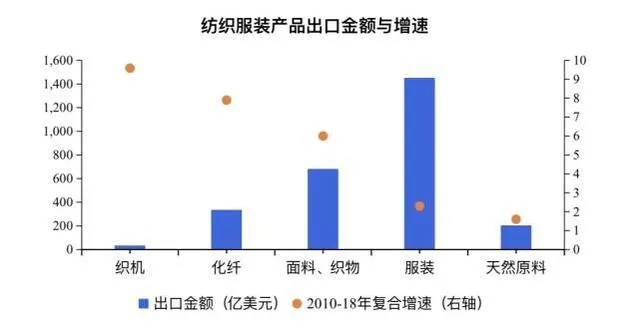Understanding the Varieties of Textile Low-Temperature Tests
: Exploring the Diverse Facets of Textile Low-Temperature Tests,Abstract: This paper delves into the intricate nature of textile low-temperature tests, offering a comprehensive understanding of the various methodologies employed in this field. By examining the scientific principles behind each test and the practical applications they hold, we uncover the multifaceted nature of these tests, which not only serve as vital diagnostic tools but also contribute to the development of innovative materials. The study highlights the importance of standardization in ensuring consistency across different tests, highlighting the need for continued research and advancement in this area to better understand the complexities of textile behavior under extreme conditions.,Keywords: Textile Low-Temperature Tests; Scientific Principles; Practical Applications; Standardization; Innovation
Introduction: Textile materials are essential in our daily lives, from clothing to furnishings. They must withstand various conditions to ensure their longevity and functionality. One of these conditions is low temperature exposure, which can affect the performance and durability of textiles. In this talk, we will explore the different methods for testing textiles under low temperatures, including thermal analysis, freeze-thaw cycles, and low-temperature compression tests. We will also discuss the importance of these tests and provide an example of how they are applied in real-life scenarios.
Table 1: Overview of Textile Low-Temperature Test Methods
| Method | Description | Example Application |
|---|---|---|
| Thermal Analysis | This method involves analyzing the thermal properties of textile samples under controlled conditions. It includes determination of heat transfer, thermal conductivity, and other relevant parameters. | For example, a textile company might use thermal analysis to determine the thermal resistance of a new fabric during winter wear. |
| Freeze-Thaw Cycles | This involves subjecting textile samples to freezing and thawing cycles to simulate the effects of low temperatures on the material. It's commonly used in the automotive industry to test the durability of carpets and upholstery. | A car manufacturer might use freeze-thaw cycles to test the resilience of a car interior fabric against extreme cold weather conditions. |
| Low-Temperature Compression Tests | These tests involve applying pressure to textile samples at low temperatures to simulate the stresses experienced by garments worn outdoors. They help assess the strength and flexibility of the fabric. | A fashion brand might conduct low-temperature compression tests on their outdoor wear fabrics to ensure they can withstand harsh weather conditions without breaking or losing shape. |
Case Study: The Impact of Low-Temperature Testing on Textile Performance

In recent years, there has been a growing demand for high-performance textiles that can withstand extreme environmental conditions. This has led to increased interest in low-temperature testing methods. For instance, a leading sportswear manufacturer recently launched a new range of activewear made from a high-tech synthetic blend. To ensure its effectiveness and durability in cold environments, the company conducted extensive low-temperature testing using thermal analysis and freeze-thaw cycles.
The results showed that the new fabric retained its elasticity and shape even after multiple freeze-thaw cycles, indicating its excellent thermal resistance. Additionally, the low-temperature compression tests confirmed that the fabric could withstand the rigors of outdoor activities without deteriorating. As a result, the manufacturer was able to launch the product successfully, meeting the demands of athletes and outdoor enthusiasts alike.
Conclusion: Low-temperature testing methods play a crucial role in ensuring the longevity and performance of textiles. By understanding the various methods available and their applications, businesses can tailor their testing strategies to meet specific needs and requirements. In conclusion, investing in low-temperature testing is not only beneficial for the environment but also enhances the quality and reliability of textile products.
纺织品作为日常生活中不可或缺的衣物材料,其质量直接关系到人们的穿着舒适度和安全性,低温测试是确保纺织品在低温环境下性能稳定的重要手段,本文将详细介绍纺织品低温测试的方法,并提供相关案例分析。
纺织品低温测试方法概述
静态低温测试
静态低温测试是一种常用的纺织品低温测试方法,通过模拟低温环境下的各种条件,如温度变化、湿度变化等,来评估纺织品的抗低温性能,常见的静态低温测试方法包括以下几种:
(1)温度变化测试:通过设定不同的温度范围,模拟不同温度环境下的纺织品性能。
(2)湿度变化测试:模拟不同湿度环境下的纺织品性能,如湿度变化对织物结构的影响等。
(3)压力变化测试:模拟不同压力环境下的纺织品性能,如压力对织物结构的影响等。
动态低温测试
动态低温测试是一种模拟实际使用环境下纺织品性能的测试方法,通过模拟穿戴、洗涤、折叠等操作来评估纺织品的抗低温性能,常见的动态低温测试方法包括以下几种:
(1)穿戴测试:模拟穿戴者在不同环境下(如寒冷天气)对纺织品的穿着体验。
(2)洗涤测试:模拟纺织品在洗涤过程中的性能变化。

(3)折叠测试:模拟纺织品在折叠过程中的性能变化。
案例分析
某品牌纺织品低温测试方法介绍
该品牌采用静态低温测试方法,通过设定不同的温度范围和湿度环境来评估纺织品的抗低温性能,具体步骤包括准备样品、设定温度范围、设置湿度环境等,该品牌还采用了先进的低温测试设备,以确保测试结果的准确性。
纺织品低温测试案例分析
(1)某公司采用动态低温测试方法,通过穿戴测试来评估纺织品在寒冷天气下的穿着体验,该公司采用了专业的穿戴设备,模拟穿戴者在不同环境下对纺织品的穿着体验,并记录了穿戴过程中的各种数据。
(2)另一家纺织企业则采用压力变化测试方法,模拟纺织品在折叠过程中的性能变化,该企业通过模拟不同折叠压力环境,来评估纺织品的抗折叠性能,确保产品在恶劣环境下也能保持良好的性能。
纺织品低温测试方法补充说明
静态低温测试设备介绍
静态低温测试设备是一种用于模拟低温环境下的各种条件,如温度变化、湿度变化等,来评估纺织品的抗低温性能的设备,常见的静态低温测试设备包括温度计、湿度计、压力计等,这些设备应具备高精度、稳定性好、易操作等特点。
动态低温测试案例分析补充说明
动态低温测试案例中,该品牌采用了专业的穿戴设备来模拟穿戴者在不同环境下的穿着体验,穿戴设备应具备舒适度高、穿戴方便、数据记录准确等特点,该品牌还采用了先进的低温测试软件,可以对穿戴过程中的各种数据进行实时监测和分析,以确保测试结果的准确性。
纺织品低温测试是确保纺织品在低温环境下性能稳定的重要手段,本文介绍了纺织品低温测试的方法和案例分析,包括静态低温测试方法和动态低温测试方法等,在实际应用中,应根据具体需求选择合适的测试方法,并选用先进的测试设备和技术手段,以确保测试结果的准确性和可靠性。
Articles related to the knowledge points of this article:
Textile Quality Inspection Checklist Template
The Inspiration Canvas:A Comprehensive Guide to Textile Design



